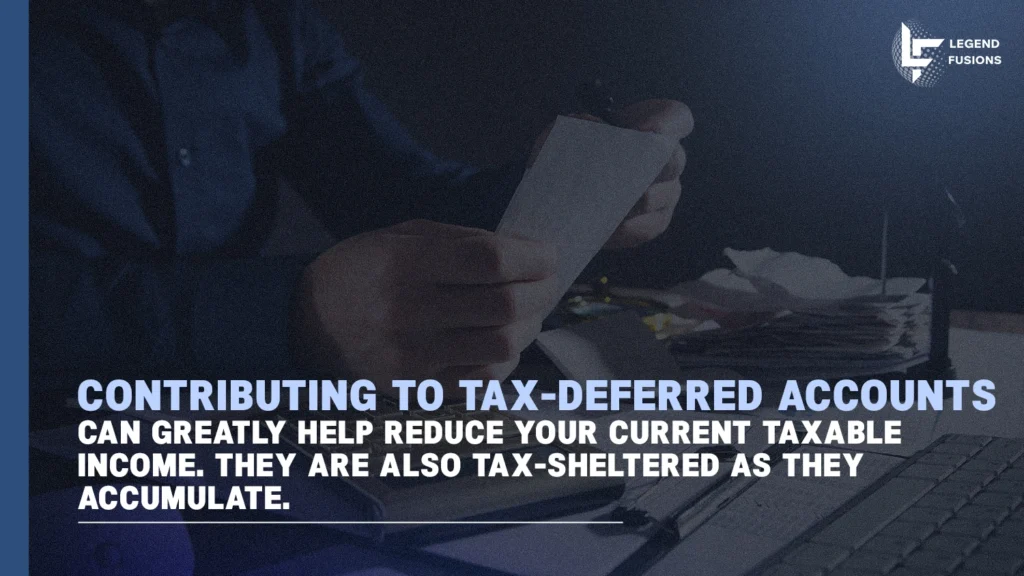Knowing how to reduce tax in Canada starts with strategic planning. Spring is usually the best time to strategize and identify your available deductions and credits and other tax-efficient methods. This article gives you several ideas. However, we highly recommend you seek professional advice before implementing any tax-saving approach.
Contents
Learn the Terminologies
Before planning and filing your taxes, be sure to know all the key terms first, as you will keep encountering them around. Here are some of the basics that still perplex new Canadian taxpayers:
- Gross vs. Net Salary. Gross salary is your total annual income before deductions. Net salary is what remains after all the deductions have been applied.
- Taxable Income. The portion of your annual income that gets taxed.
- Tax Brackets vs Tax Rates. Imagine your income is divided into different ‘buckets’ or levels. These buckets are the tax brackets. Each bucket has a specific income range. In federal level, the first bucket is $0 to $57,375 of your income, the next $57,375 and $114,750, and so on (2025 tax brackets).
The tax rate is the percentage of tax you pay on the money within each of those income buckets (tax brackets). Importantly, the tax rate usually increases as you move into higher income brackets.
- Tax Deductions vs. Tax Credits. These two are not interchangeable. Tax deductions are applied before the tax brackets and are used to reduce your income. Tax credits, on the other hand, reduce your tax payable. They come in two forms, as below.
- Non-Refundable vs Refundable Tax Credits. Both tax credits lower your tax payable. The difference is that refundable tax credits result in refunds if your credit exceeds your tax owing or even if you have no tax to pay.
Below, we outline several tax-saving strategies to know before filing your 2024 income tax return. Want to know how much tax will you pay in your Canada salary tax 2024? Check out our guide.
Reduce Your Taxable Income
Lower your taxable income by contributing the maximum amount to the following accounts. They are tax-deferred, meaning, they are not charged income taxes (tax-sheltered) until a later date:
• Registered Retirement Savings Plans (RRSPs)
Maxing out your RRSP contribution limit can significantly lower your taxable income. Note that this is a retirement account, and since most often your taxable income is lower at retirement than in your working age, it is an effective strategy to reduce your income tax and build wealth throughout your lifetime.
Your RRSP contribution limit for 2024 is $31,560 or 18% of your previous year’s income, whichever is less. For 2025, the dollar limit will increase to $32,490. The CRA sends a Notice of
Assessment/Reassessment anytime there are changes to your RRSP contribution room.
Caveat: The deadline for RRSP contribution for the 2024 tax year was last March 3, 2025. For the 2025 tax year, contribution immediately starts on March 4, 2025, and ends on March 2, 2026.
• First Home Savings Accounts (FHSAs)
The FHSA is available to Canadian residents who are buying their first home. You are an eligible first-time homebuyer if you or your spouse have not owned a house since the FHSA started or in the past four years. Your lifetime contribution limit is $40,000. In 2024, this limit is capped at $8,000, which you can carry forward to the next year if unused.
Be sure to consult a tax advisor to determine which tax-deferred accounts to use in your situation. It also depends on your saving or investment goals.

Claim Qualifying Deductions
Before filing your tax returns, you need to identify the deductions, credits, and expenses you are eligible for according to your circumstances. You might want to consider the following situation-specific deductions:
• Moving Expenses
This is available for employees and self-employed individuals and full-time students with varying eligibility criteria. If you are employed or self-employed, you are eligible to claim for moving expenses if:
- You have moved to a new home to work or run a business at a new location.
- Your new home is at least 40 kilometers closer (by the shortest public route) to your new work location.
- You earn employment or self-employment income at your new work location during the year of the move.
If you meet the above criteria, you can complete the Form T1-M to calculate and claim your deduction. Note these:
- If you received any employer reimbursements for moving expenses, you can claim only if you include that amount in your income or reduce your moving expense claim by that amount.
- If your moving expenses exceed your eligible income for the year, you can carry forward the excess to future years.
- If you pay for moving expenses in a year following the move, you can claim those expenses against the income earned at the new work location for that year.
- You cannot claim moving expenses in a prior tax year, even if you earned income at the new location in that year.
Full-time students follow different rules:
- If you move to attend a post-secondary institution full-time, you can claim eligible moving expenses related to any taxable scholarships or grants.
- You must also be a factual or deemed resident of Canada.
- Your new home, like above, should meet the 40 km distance criteria.
Be sure to keep detailed records and receipts for smoother claims.
• Canada Caregiver Credit
This may be available to you if you are providing essential services to a loved one with an impairment. You may be eligible to claim this credit if you support:
- Your spouse or common-law partner with a physical or mental impairment.
- A dependent who relies on you for basic needs (food, shelter, clothing) due to a physical or mental impairment. This includes:
- Your or your spouse’s child or grandchild.
- Your or your spouse’s parent, grandparent, sibling, or other close relatives residing in Canada.
Here are how much you can claim:
- For Spouse/Common-Law Partner — up to $2,616 (or more, depending on circumstances)
- For Eligible Dependants (aged 18 or older) —up to $2,616 for each child
- For Dependants (18 or older) — up to $8,375 each for those you don’t claim for other credit lines.
For dependants to generally qualify, they must be Canadian residents. However, there are exceptions to this rule. Consult a tax expert to see if your dependant may be eligible.
• Medical Expenses Tax Credit
This tax credit requires receipts for medical expenses you were not reimbursed for. Keep other documents as well to verify your claim. Some of the frequently overlooked medical credits include dentures and dental implants, travel expenses to get treatment, home renovations to accommodate a loved one with disability or impairment, and more. Be sure to confirm your eligibility with CRA’s list of medical expenses before claiming them in your tax return.
• First-Time Home Buyers’ Tax Credit (HBTC)
Also known as First-Time Home Buyers’ Amount, this non-refundable credit helps qualifying or disabled homebuyers with their purchase expenses. This allows you to claim a non-refundable income tax credit of $10,000 in your tax return, which you can also split with your spouse. Note that you do not get this full amount, only a portion of 15%. That means the maximum tax reduction you can get is $1,500. This can greatly reduce your tax payable up to zero.
• Self-Employment Expenses
The Canadian Revenue Agency (CRA) also allows you to deduct your business expenses on your tax return. Most often, you can claim for various expenses, including bank fees, office supplies, vehicle expenses, business-use-of-home expenses, advertising costs, inventory, and other expenditures. Be sure to keep proper records and receipts to support your claims.
• Province-Specific Tax Credits
Tax credits differ at the federal and provincial/territorial level. Meaning, your provincial credits may not be available at the federal level. For instance, if you are based in Ontario, Saskatchewan, Manitoba, or Alberta, you may be eligible to claim the Canada Carbon Rebate (CCR). Another way how to reduce income tax Ontario is by claiming the Ontario Trillium Benefit (OTB). Note that these two tax credits are refundable and do not directly reduce income tax payable.
• Other Expenses to Claim
See if you are eligible to claim for these expenses, too:
- RPP deduction
- Elected split-pension amount
- Union or professional dues
- Childcare expenses
- Attendant care expenses
- Support payments made
- Carrying charges
- Other employment expenses
If you are unsure which deductions and tax credits apply in your situation, consult a tax expert.
Check relevant blog: How to Calculate Ontario Tax.
Learn All Spousal Tax Perks
You can also reduce taxable income as a couple by splitting pension income with your spouse or common-law partner. This income-splitting method allows the higher-earning partner to transfer a portion of their pension income to the lower-earning one.
The types of pension incomes you can split with your spouse during retirement include:
- Annuity payments from RRSPs
- RRIF pension income
- Life annuities from a superannuation or pension plan
You cannot split these pension types: Canada Pension Plan (CPP), Quebec Pension Plan (QPP) and Old Age Security (OAS).
Reinvest Your Tax Refunds
If you receive a tax refund, consider reinvesting it in a Tax-Free Savings Account (TFSA). A TFSA is ideal for short- or medium-term savings goals, allowing your investments to grow tax-free. Keep in mind that unlike RRSP contributions, TFSA contributions do not provide a tax deduction, but your withdrawals remain tax-free. For both the 2024 and 2025 tax years, your annual contribution limit is up to $7,000.
Principal Residence Exemption
Selling a property usually incurs capital gains tax, but not if it is your primary residence. For your home to qualify for this exemption, it should not be rental property, and you must be dwelling in it. If you have owned a vacation property for a long time and it has appreciated in value more than your main home, you can declare it as your primary residence instead. Seek expert advice on how to manage large capital gains.
Make Charitable Donations
Giving heartfelt donations to the cause you care about is a win-win for you and the charity donee. If your income falls into the highest tax-bracket at the federal level and further into the higher provincial level tax brackets, you may receive a Charitable Donation Tax Credit of up to 33% (if you are in the highest tax bracket), a non-refundable tax credit incentive.
If you are donating investment, you can potentially avoid or significantly minimize your capital gains tax. This is why making charitable donations is one of the major ways how to reduce taxes for high income earners in Canada.
Leverage a Loan and Invest
This is not a direct way to reduce your tax liability, but an idea that not all debts are bad if used wisely. If you loan for the purpose of investment, the interest can be tax-deductible. Moreover, some investments, like stocks, can get tax breaks on capital gain and dividend.
How to Reduce Tax in Canada FAQs
The federal Basic Personal Amount (BPA) is 15% of $15,705 in 2024. This will be your tax-free amount.
Generally, living abroad does not automatically exempt you from Canadian taxes. You are still liable unless you legally become a tax ‘emigrant’ by severing residential ties.
Some incomes are non-taxable in Canada, including most gifts, inheritance, and lottery winnings.
No, as there is no inheritance tax. That means you do not have to report any amount you receive as an heir.
At some point between 2001 to 2015, Alberta used a flat rate tax system. Now, all provinces have several tax brackets, following a progressive tax system.
Get Advice from Legend Fusions
Want to know how to reduce tax in Canada according to your specific tax and financial situation? Get personalized advice from Legend Fusions. Before filing your T1 taxes, we make sure you are aware of all the deductions, credits, and expenses you can claim, as well as all the other tax-efficient strategies that can significantly lessen your taxable income. Above all, we ensure you file accurately. Talk to our tax return specialist at Legend Fusions!

Jeffrey Ross
Jeffrey Ross is an experienced tax accountant focused on US-Canada cross-border taxation, with over three years in the industry, including a key role as client manager at a Canadian tax firm. He provides expertise in corporate and personal tax planning, specializing in non-resident tax, capital gains, CRA and IRS compliance, and retirement planning. Known for his personalized approach, Jeffrey is dedicated to guiding clients with clear, practical advice tailored to complex tax scenarios, aligned with the evolving tax laws.

